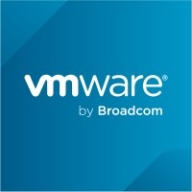


VMware VeloCloud SD-WAN and Zscaler Zero Trust Exchange Platform both compete in the network management and security space. VMware VeloCloud stands out for its Dynamic Multipath Optimization and ease of deployment, whereas Zscaler excels in its comprehensive cloud-based security features, offering a more robust solution for internet security.
Features: VMware VeloCloud is known for its Dynamic Multipath Optimization, which enhances the performance of cloud workloads. It also offers simplicity in deployment with its zero-touch provisioning and a user-friendly dashboard for managing multiple sites. Zscaler Zero Trust Exchange offers exceptional VPN capabilities, seamless security integrations, and strong cloud security measures, including web filtering and integration with multiple identity providers.
Room for Improvement: VMware VeloCloud SD-WAN requires enhanced security features and better support for integrations with third-party vendors. Additionally, users seek a more flexible pricing model and improved technical support. Zscaler Zero Trust Exchange Platform needs to address scalability and pricing flexibility, and improve collaboration with applications. Users have reported latency issues and desire more control over security policies.
Ease of Deployment and Customer Service: VMware VeloCloud offers versatile deployment options across various cloud environments, with users finding its setup relatively straightforward. However, customer service can be inconsistent, often relying on documentation and partner support. Zscaler offers wide deployment flexibility and is appreciated for its integration with cloud environments. Customer service is generally responsive, though complex issues can sometimes pose challenges.
Pricing and ROI: VMware VeloCloud SD-WAN is often perceived as expensive, with concerns surrounding licensing costs and hardware needs affecting ROI. Zscaler Zero Trust Exchange Platform is similarly viewed as costly, particularly for large-scale deployments, despite having a flexible licensing model. Both solutions are acknowledged for their value, but their pricing may not align with the budgetary constraints of all organizations.
| Product | Market Share (%) |
|---|---|
| Zscaler Zero Trust Exchange Platform | 11.1% |
| iboss | 2.1% |
| VMware VeloCloud SD-WAN | 3.1% |
| Other | 83.7% |



| Company Size | Count |
|---|---|
| Small Business | 6 |
| Midsize Enterprise | 6 |
| Large Enterprise | 5 |
| Company Size | Count |
|---|---|
| Small Business | 23 |
| Midsize Enterprise | 14 |
| Large Enterprise | 20 |
| Company Size | Count |
|---|---|
| Small Business | 16 |
| Midsize Enterprise | 11 |
| Large Enterprise | 41 |
Iboss offers a comprehensive cloud-based security platform valued for its scalability and autonomous features, ensuring robust security with easy deployment and management capabilities.
Renowned for its robust security architecture, Iboss integrates seamlessly within diverse networks, delivering efficient granular filtering and advanced content categorization. Its single pane of glass console provides ease of management, allowing rapid scalability suitable for rapidly deploying environments. Operates in BYOD setups due to inline filtering without device installation. Integration with cloud-based applications enhances user control, and features like SASE, SSL inspection, and ChatGPT risk protection stand as highlights. Despite its strengths, users have pointed out areas for enhancement like direct navigation in reports, SSL decryption, and better cloud integration while having room to improve data loss prevention.
What are the most important features of Iboss?The usage of Iboss spans educational institutions, specifically K-12, to enforce internet policies, protect data, and support remote work environments. It provides web filtering and security frameworks to ensure safe browsing. Its platform-as-a-service model offers flexibility for both cloud-based and on-premises requirements, integrating seamlessly to deliver enhanced security features suitable for various deployment needs including zero trust, CASB, and network security for work-from-home setups.
VMware Software-Defined Wide Area Network (SD-WAN) is a secure access service edge (SASE) platform that combines many types of software-based network technologies in an attempt to enable users to virtualize their wide area networks and reduce their reliance on hardware. In essence, this solution makes it possible for users to reliably access their applications from anywhere in the world by leveraging cloud technologies. Users can simply, efficiently, and completely control their network devices and traffic. It ensures that organizations are always able to use the best possible connection to their data centers. VMware SD-WAN steers traffic so that it is always using the most reliable connections and at the same time takes steps to remediate any problems that it detects in other network links. This guarantees that organizations can access high-priority applications at all times.
VMware SD-WAN Benefits
Some of the ways that organizations can benefit by deploying VMware SD-WAN include:
VMware SD-WAN Features
Reviews from Real Users
VMware SD-WAN is a solution that stands out when compared to many of its competitors. Two major advantages it offers are its ability to automate the process of creating and maintaining a virtual local area network and its intuitive user dashboard.
Sami I., principal cloud architect at Loihe, writes, “One of the solution's most valuable features is the VMware core automation stack at an SDDC. It includes NSX, the VMware virtualization layer for the networks (the LAN virtualization), which works extremely well with the VMware SD-WAN solution and is the primary advantage over all the others. None of the other vendors could integrate with the virtual LAN, making it quite complicated and virtualized to be fully automated.”
Chih S., senior technical consultant at a tech services company, says, “The product has a very good user dashboard that is simple to navigate.”
Zscaler Zero Trust Exchange enhances security with seamless cloud-based connectivity and VPN-less operation, offering integration with multiple identity providers and advanced security features, suitable for remote work environments.
Zscaler Zero Trust Exchange provides secure, adaptive connectivity without traditional VPNs, allowing organizations to replace legacy systems and bolster remote work security. The platform offers cloud-based protection, single sign-on, dynamic URL categorization, and scalable solutions. While advanced security features like DLP and threat protection enhance data protection, users may face issues with speed, connectivity, and some customization options. Integration challenges, latency due to multi-tenant hosting, reporting delays, and licensing costs require consideration. It supports secure internet access and private application security, ensuring traffic control and data compliance.
What are the key features of Zscaler Zero Trust Exchange?Zscaler Zero Trust Exchange is deployed across industries to secure remote access and enforce zero trust principles. Organizations in finance, healthcare, and technology sectors utilize it for secure internet access and visibility into cloud applications, enhancing performance and compliance in dynamic environments.
We monitor all Secure Access Service Edge (SASE) reviews to prevent fraudulent reviews and keep review quality high. We do not post reviews by company employees or direct competitors. We validate each review for authenticity via cross-reference with LinkedIn, and personal follow-up with the reviewer when necessary.